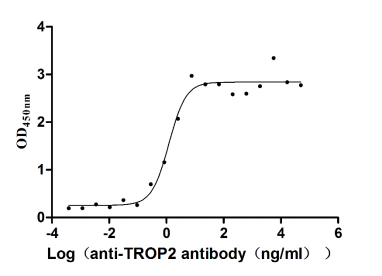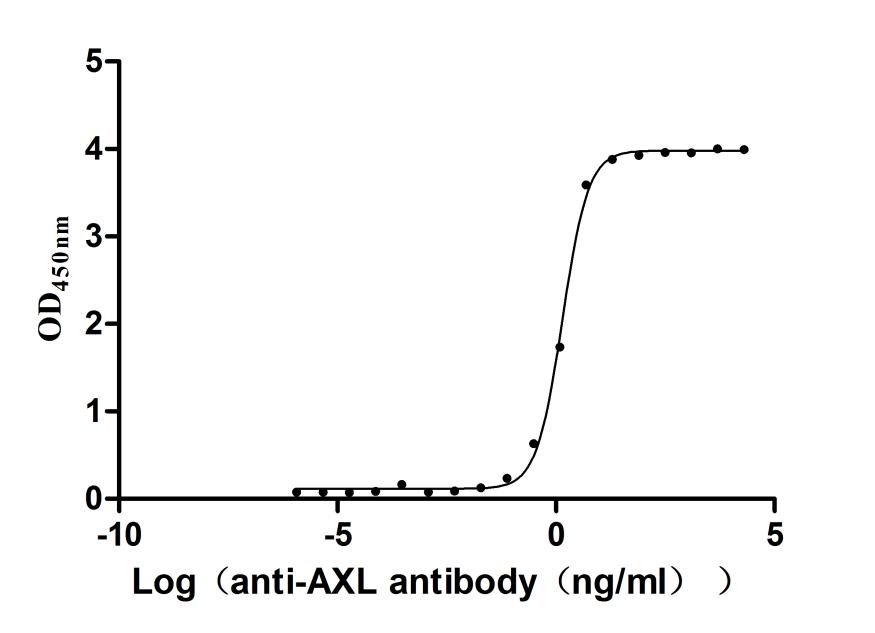Recombinant Human Myelin transcription factor 1-like protein (MYT1L), partial
-
中文名稱:人MYT1L重組蛋白
-
貨號(hào):CSB-YP891959HU
-
規(guī)格:
-
來(lái)源:Yeast
-
其他:
-
中文名稱:人MYT1L重組蛋白
-
貨號(hào):CSB-EP891959HU
-
規(guī)格:
-
來(lái)源:E.coli
-
其他:
-
中文名稱:人MYT1L重組蛋白
-
貨號(hào):CSB-EP891959HU-B
-
規(guī)格:
-
來(lái)源:E.coli
-
共軛:Avi-tag Biotinylated
E. coli biotin ligase (BirA) is highly specific in covalently attaching biotin to the 15 amino acid AviTag peptide. This recombinant protein was biotinylated in vivo by AviTag-BirA technology, which method is BriA catalyzes amide linkage between the biotin and the specific lysine of the AviTag.
-
其他:
-
中文名稱:人MYT1L重組蛋白
-
貨號(hào):CSB-BP891959HU
-
規(guī)格:
-
來(lái)源:Baculovirus
-
其他:
-
中文名稱:人MYT1L重組蛋白
-
貨號(hào):CSB-MP891959HU
-
規(guī)格:
-
來(lái)源:Mammalian cell
-
其他:
產(chǎn)品詳情
-
純度:>85% (SDS-PAGE)
-
基因名:MYT1L
-
Uniprot No.:
-
別名:Myelin transcription factor 1-like protein; MyT1-L; MyT1L; MYT1L_HUMAN; neural zinc finger transcription factor 1
-
種屬:Homo sapiens (Human)
-
蛋白長(zhǎng)度:Partial
-
蛋白標(biāo)簽:Tag?type?will?be?determined?during?the?manufacturing?process.
The tag type will be determined during production process. If you have specified tag type, please tell us and we will develop the specified tag preferentially. -
產(chǎn)品提供形式:Lyophilized powder
Note: We will preferentially ship the format that we have in stock, however, if you have any special requirement for the format, please remark your requirement when placing the order, we will prepare according to your demand. -
復(fù)溶:We recommend that this vial be briefly centrifuged prior to opening to bring the contents to the bottom. Please reconstitute protein in deionized sterile water to a concentration of 0.1-1.0 mg/mL.We recommend to add 5-50% of glycerol (final concentration) and aliquot for long-term storage at -20℃/-80℃. Our default final concentration of glycerol is 50%. Customers could use it as reference.
-
儲(chǔ)存條件:Store at -20°C/-80°C upon receipt, aliquoting is necessary for mutiple use. Avoid repeated freeze-thaw cycles.
-
保質(zhì)期:The shelf life is related to many factors, storage state, buffer ingredients, storage temperature and the stability of the protein itself.
Generally, the shelf life of liquid form is 6 months at -20°C/-80°C. The shelf life of lyophilized form is 12 months at -20°C/-80°C. -
貨期:Delivery time may differ from different purchasing way or location, please kindly consult your local distributors for specific delivery time.Note: All of our proteins are default shipped with normal blue ice packs, if you request to ship with dry ice, please communicate with us in advance and extra fees will be charged.
-
注意事項(xiàng):Repeated freezing and thawing is not recommended. Store working aliquots at 4°C for up to one week.
-
Datasheet :Please contact us to get it.
靶點(diǎn)詳情
-
功能:Transcription factor that plays a key role in neuronal differentiation by specifically repressing expression of non-neuronal genes during neuron differentiation. In contrast to other transcription repressors that inhibit specific lineages, mediates repression of multiple differentiation programs. Also represses expression of negative regulators of neurogenesis, such as members of the Notch signaling pathway, including HES1. The combination of three transcription factors, ASCL1, POU3F2/BRN2 and MYT1L, is sufficient to reprogram fibroblasts and other somatic cells into induced neuronal (iN) cells in vitro. Directly binds the 5'-AAGTT-3' core motif present on the promoter of target genes and represses transcription by recruiting a multiprotein complex containing SIN3B. The 5'-AAGTT-3' core motif is absent from the promoter of neural genes.
-
基因功能參考文獻(xiàn):
- (1) MYT1L is required for neuronal differentiation and identified ID1 as a target. (2) Although MYT1L prevented expression of ID1, it induced expression of a large number of terminal differentiation genes. (3) Consistently, expression of MYT1L in the human brain coincided with neuronal maturation and inversely correlated with that of ID1 and ID3 throughout the lifespan. PMID: 28470180
- This study demonstrates that MYT1L variants are associated with syndromic obesity in humans. The mechanism is related to dysregulated expression of neurodevelopmental genes and altered development of the neuroendocrine hypothalamus PMID: 28859103
- Haplotype-dependent allele-specific methylation of MYT1L gene is associated with neurological disorders. PMID: 27153397
- Our data strongly strengthen the hypothesis that MYT1L is the causal gene for the observed syndromal intellectual disability. PMID: 25232846
- Report shows that the first histidine of Cys2His2Cys domains is involved in a functionally important hydrogen bonding interaction. PMID: 24820620
- MYT1L rs17039396 variants are associated with clinical outcome in gastric cancer. PMID: 24015200
- MYT1L and the SNTG2 genes within the reported region could probably relate to the phenotypic discordance of the monozygotic twins. PMID: 23061379
- Data indicate that reintroduction of A2BP1 or Myt1L in glioblastoma multiforme (GBM) cell lines and glioma stem cells profoundly inhibited tumorigenesis. PMID: 23918370
- A meta-analysis of four recently published studies that together provide strong evidence for an association between variably sized microduplications involving the MYT1L gene and schizophrenia. PMID: 22547139
- Results from this study indicate that the 2p25.3 duplication disrupting PXDN and MYT1L is a potential autism-causing variant in the pedigree reported here and should receive further consideration as a candidate for autism PMID: 22157634
- Findings suggest that MYT1L may represent a susceptibility gene for schizophrenia in the Han Chinese population and show that a specific SNP may increase susceptibility in females. PMID: 21923761
- MYT1L deletion gives a nonspecific clinical phenotype shared by patients with 2p25.3 deletions, with only intellectual disability and obesity/overweight being present in all patients. PMID: 21990140
- results indicate that MYT1L may be a potential risk gene for major depressive disorder in the Chinese Han population PMID: 21048971
顯示更多
收起更多
-
相關(guān)疾病:Mental retardation, autosomal dominant 39 (MRD39)
-
亞細(xì)胞定位:Nucleus. Chromosome.
-
蛋白家族:MYT1 family
-
數(shù)據(jù)庫(kù)鏈接:
Most popular with customers
-
Recombinant Human Microtubule-associated protein tau (MAPT) (Active)
Express system: Mammalian cell
Species: Homo sapiens (Human)
-
Recombinant Human Tumor-associated calcium signal transducer 2 (TACSTD2), partial (Active)
Express system: Mammalian cell
Species: Homo sapiens (Human)
-
Recombinant Human Transferrin receptor protein 1 (TFRC), partial (Active)
Express system: Mammalian cell
Species: Homo sapiens (Human)
-
Recombinant Human Tyrosine-protein kinase receptor UFO(AXL),partial (Active)
Express system: Mammalian cell
Species: Homo sapiens (Human)


-AC1.jpg)












